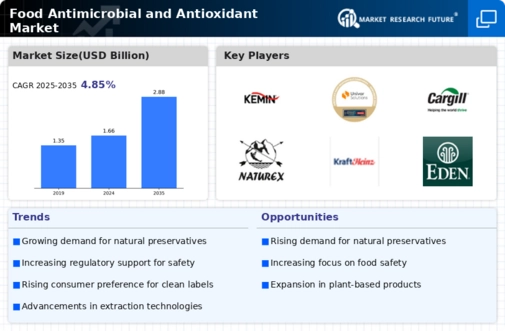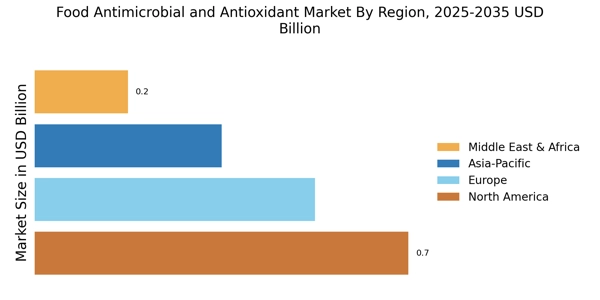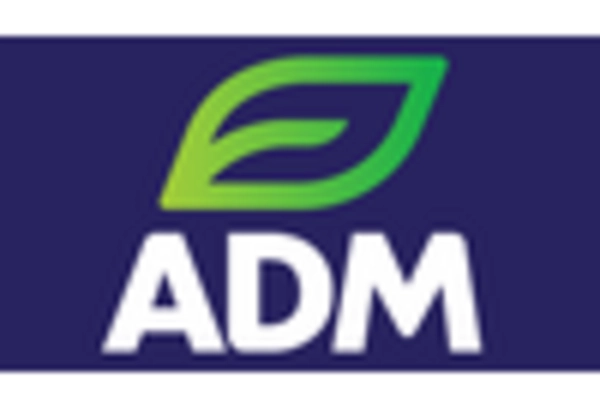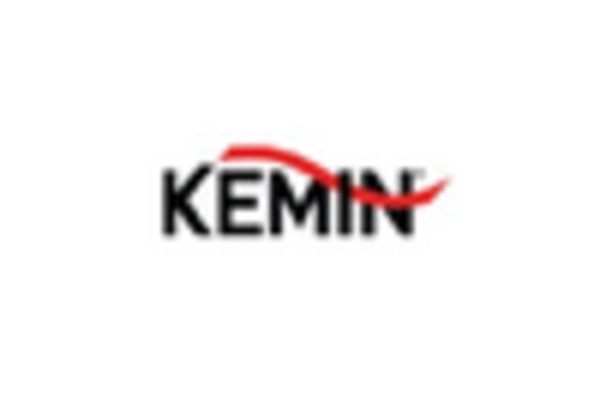Increasing Consumer Awareness
The Food Antimicrobial and Antioxidant Market is experiencing a surge in consumer awareness regarding food safety and health benefits. As individuals become more informed about the risks associated with foodborne illnesses and oxidative stress, there is a growing demand for products that incorporate antimicrobial and antioxidant properties. This trend is reflected in market data, which indicates that the demand for natural preservatives is expected to rise significantly, with projections suggesting a compound annual growth rate of over 5% in the coming years. Consumers are increasingly seeking products that not only enhance shelf life but also contribute to overall health, thereby driving innovation within the Food Antimicrobial and Antioxidant Market.
Rising Demand for Processed Foods
The Food Antimicrobial and Antioxidant Market is significantly influenced by the rising demand for processed foods. As urbanization and busy lifestyles continue to shape consumer behavior, the need for convenient food options has escalated. This trend has led to an increased reliance on preservatives to ensure food safety and extend shelf life. Market analysis indicates that the processed food sector is projected to grow at a compound annual growth rate of around 4% over the next few years. Consequently, the incorporation of effective antimicrobial and antioxidant agents in processed foods is becoming essential, thereby propelling growth within the Food Antimicrobial and Antioxidant Market.
Shift Towards Clean Label Products
The Food Antimicrobial and Antioxidant Market is witnessing a notable shift towards clean label products, as consumers increasingly prefer transparency in food ingredients. This trend is characterized by a demand for products that are free from artificial additives and preservatives. Market data suggests that the clean label segment is anticipated to grow at a rate of approximately 7% annually, reflecting a significant consumer preference for natural and recognizable ingredients. As manufacturers respond to this demand, they are incorporating natural antimicrobials and antioxidants into their formulations, thereby enhancing the appeal of their products in the Food Antimicrobial and Antioxidant Market.
Technological Innovations in Preservation
The Food Antimicrobial and Antioxidant Market is benefiting from technological innovations that enhance food preservation methods. Advances in extraction techniques and formulation technologies are enabling the development of more effective antimicrobial and antioxidant agents. These innovations not only improve the efficacy of these agents but also allow for their incorporation into a wider range of food products. As a result, manufacturers are increasingly adopting these technologies to meet consumer demands for safer and longer-lasting food products. The market is expected to see a growth trajectory of approximately 6% as these technological advancements continue to evolve within the Food Antimicrobial and Antioxidant Market.
Regulatory Support for Natural Preservatives
The Food Antimicrobial and Antioxidant Market is positively impacted by regulatory support for the use of natural preservatives. Governments and food safety authorities are increasingly recognizing the importance of natural ingredients in food preservation, leading to favorable regulations that promote their use. This regulatory environment encourages manufacturers to explore and adopt natural antimicrobials and antioxidants, aligning with consumer preferences for clean label products. Market data indicates that the regulatory landscape is likely to evolve further, potentially increasing the market share of natural preservatives in the Food Antimicrobial and Antioxidant Market by up to 10% in the next few years.


















Leave a Comment